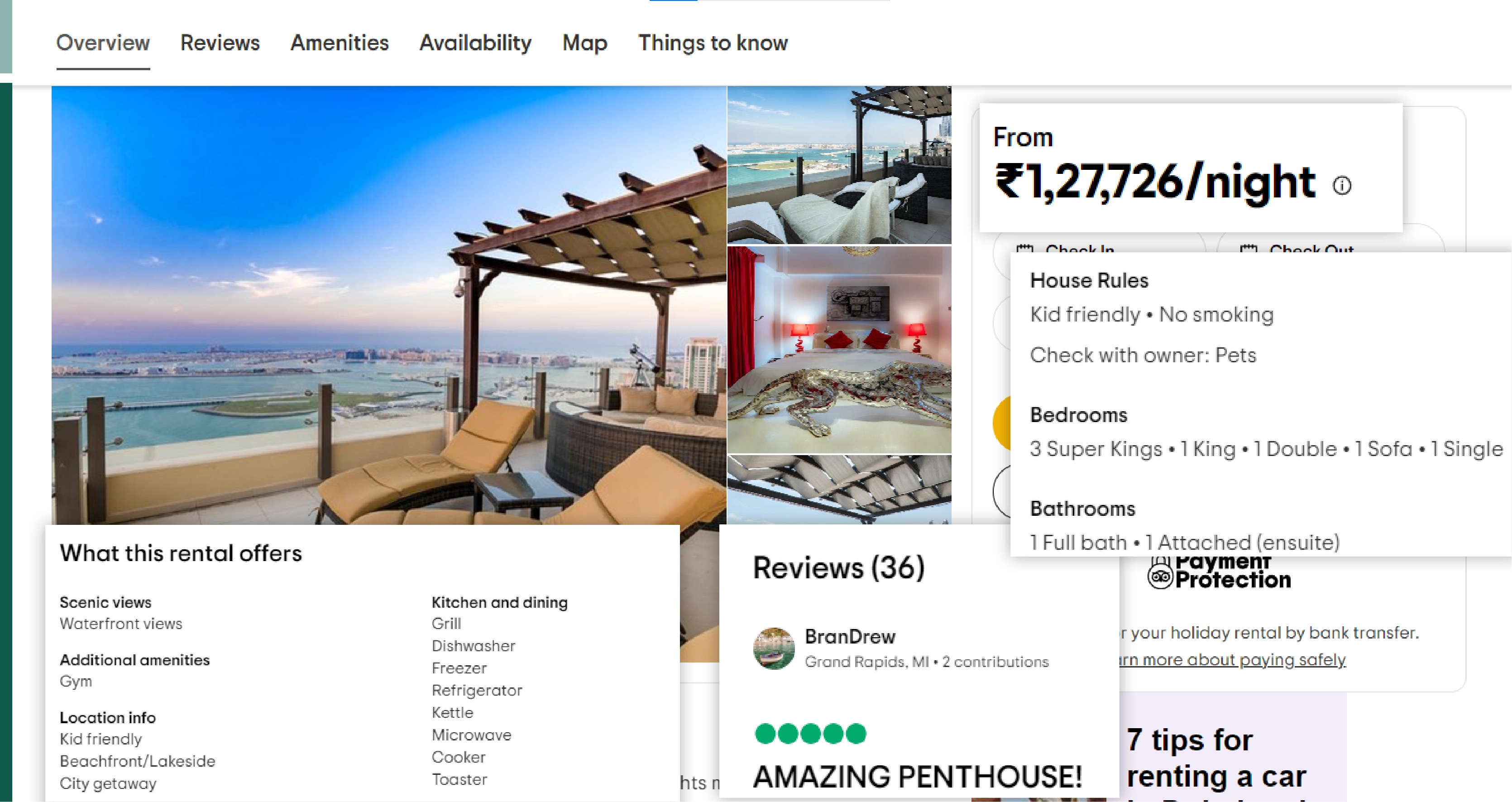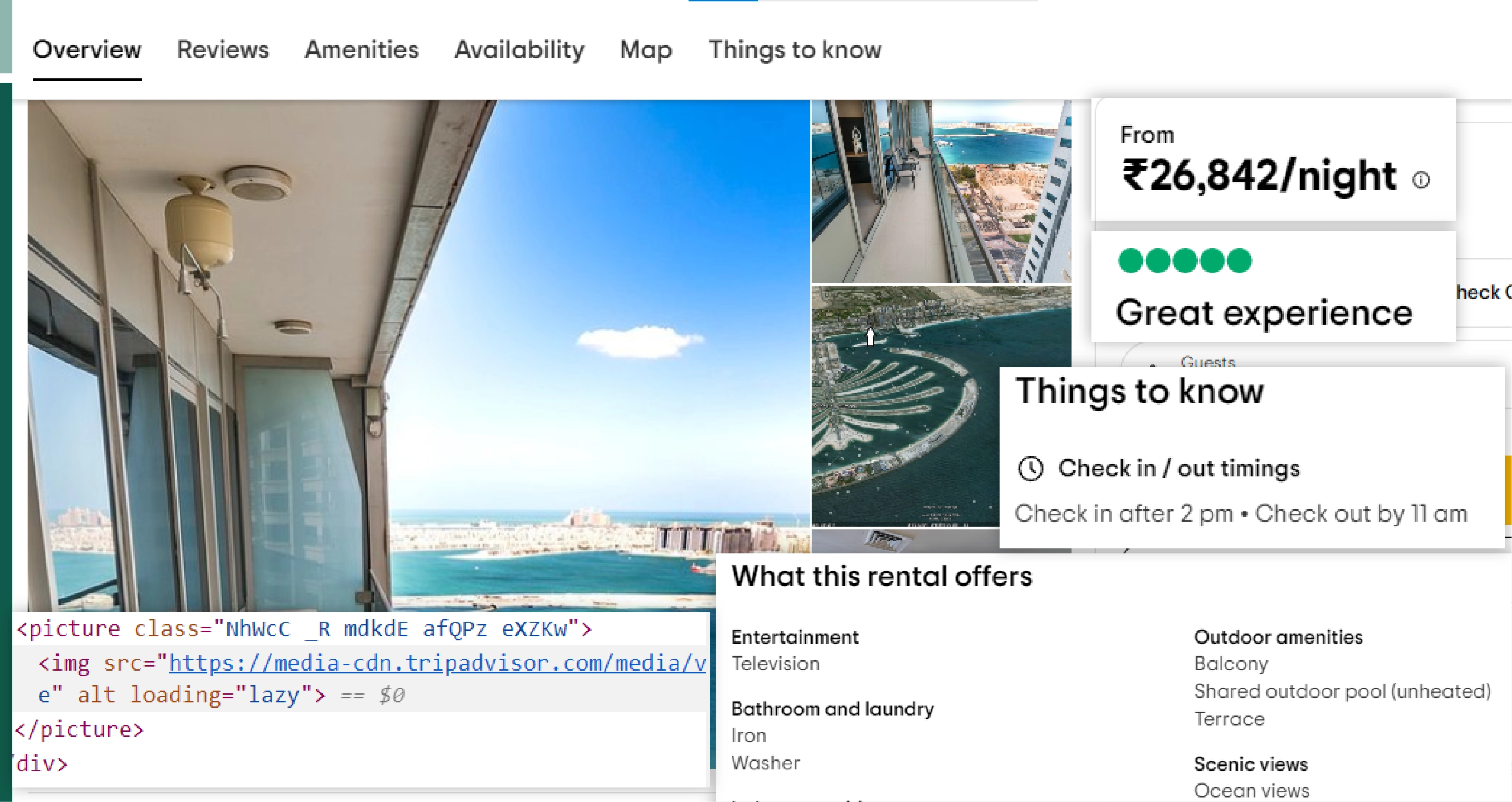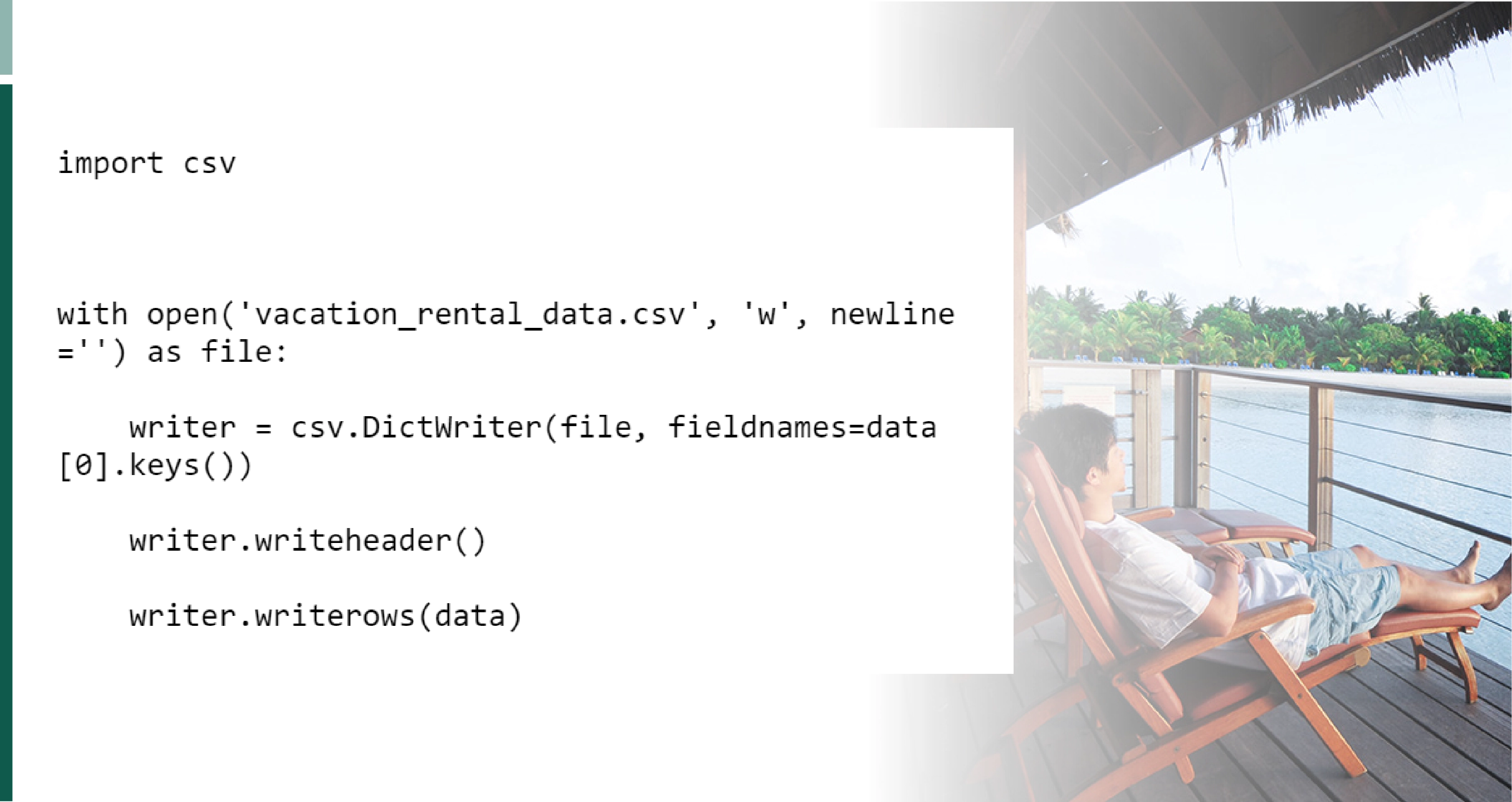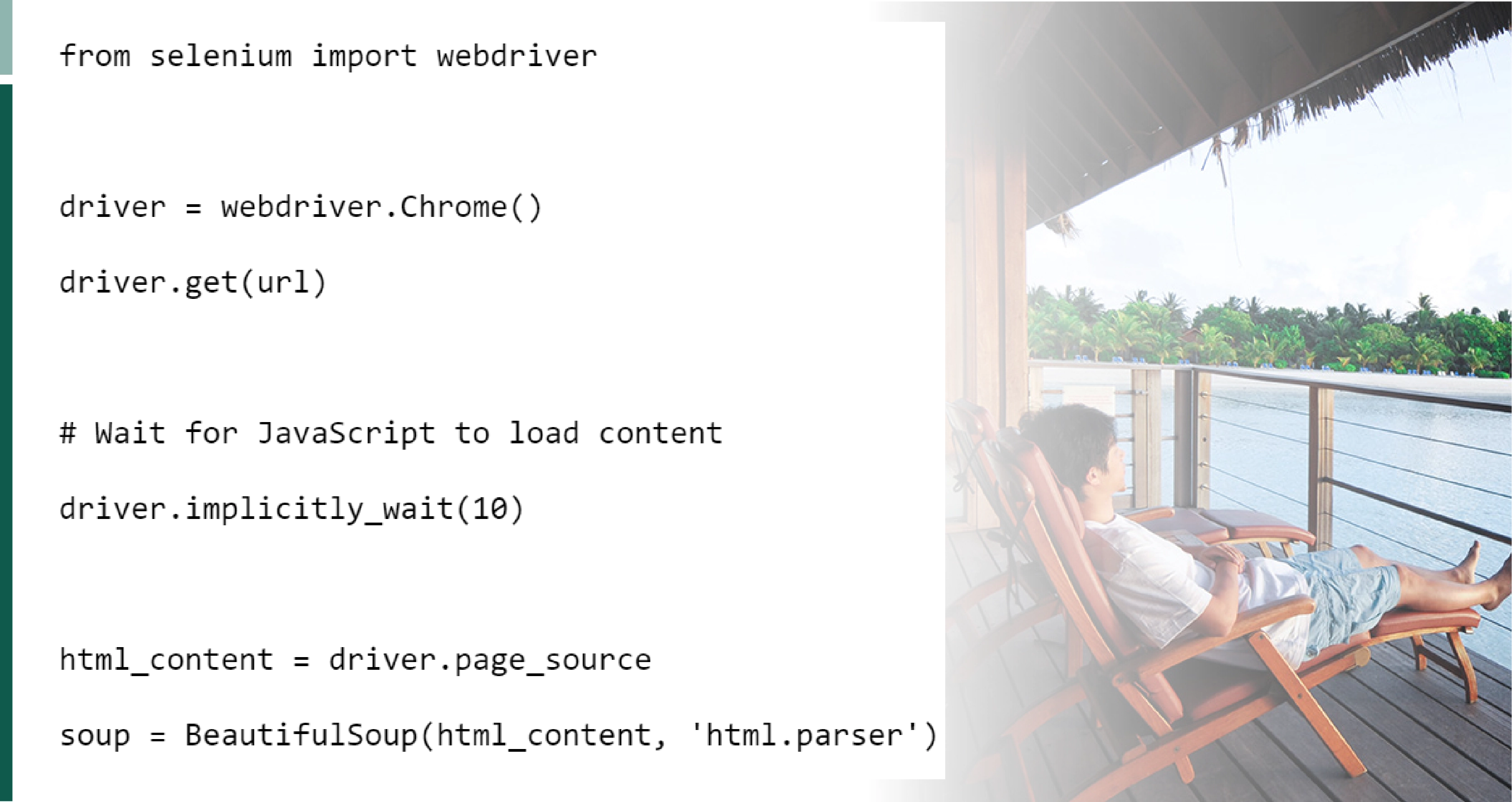How to Scrape Vacation Rental Data – A Comprehensive Guide

Introduction
In the rapidly evolving vacation rental market, access to accurate and up-to-date data is crucial for competitive advantage. With the rise of platforms like Airbnb, Vrbo, and Booking.com, vacation rentals have become a preferred choice for travelers worldwide. According to the latest statistics, the global vacation rental market is expected to reach $113.9 billion by 2027, growing at a CAGR of 3.4% from 2020 to 2027. This growth is fueled by increasing demand for flexible travel accommodations and the expanding influence of digital platforms.
To thrive in this dynamic environment, businesses need to harness the power of data. Vacation rental data scraping provides valuable insights into market trends, pricing strategies, customer preferences, and property availability. This comprehensive guide will delve into the techniques and tools required for effectively scraping and extracting vacation rental data, helping you stay ahead of the competition.
Understanding Vacation Rental Data

Vacation rental data encompasses a wide range of information, including property details, pricing, availability, customer reviews, and more. Key data points typically include:
Property Information: Address, type, size, amenities, photos, and descriptions.
Pricing Data: Nightly rates, cleaning fees, service fees, and seasonal pricing variations.
Availability: Calendar data showing booked and available dates.
Customer Reviews: Ratings, comments, and feedback from previous guests.
Host Information: Contact details, response rates, and other relevant metrics.
Accessing this data allows businesses to analyze market trends, compare competitive pricing, optimize property listings, and enhance customer experiences.
Why Scrape Vacation Rental Data?

Vacation rental data scraping is a powerful strategy that provides invaluable insights and competitive advantages in the rapidly growing vacation rental market. As platforms like Airbnb, Vrbo, and Booking.com dominate the landscape, accessing comprehensive and up-to-date vacation rental data is crucial for businesses to thrive. Here are several reasons why extracting vacation rental data is essential:
Market Analysis and Trends
Using Vacation rental data extraction, businesses can monitor market trends and identify emerging patterns. To Extract Short-Term Vacation Rental Data helps you get the analysis of pricing fluctuations, occupancy rates, and seasonal demand variations. This information helps property managers and investors make informed decisions, optimizing their strategies to align with current market conditions.
Competitive Pricing
Understanding how competitors price their properties is key to setting competitive rates. Scraping vacation rental data provides detailed insights into competitors' pricing strategies, including base rates, cleaning fees, and seasonal adjustments. By analyzing this data, businesses can adjust their pricing to attract more bookings while maximizing revenue.
Performance Benchmarking
Vacation rental data collection enables businesses to benchmark their performance against competitors. By comparing metrics such as booking rates, customer reviews, and property features, property managers can identify strengths and weaknesses in their listings. This benchmarking helps in making data-driven improvements to enhance overall performance and guest satisfaction.
Customer Insights
Extracting vacation rental data includes analyzing customer reviews and ratings. Understanding guest preferences, common complaints, and areas of appreciation can guide property improvements and service enhancements. Positive reviews and high ratings are crucial for attracting more guests and building a strong reputation in the market.
Demand Forecasting
Accurate demand forecasting is essential for optimizing property availability and pricing. Extracting vacation rental data provides historical booking data, which can be analyzed to predict future demand trends. This foresight allows property managers to adjust availability and pricing strategies, ensuring maximum occupancy and revenue during peak seasons.
Data-Driven Marketing
Vacation rental data offers valuable insights for targeted marketing campaigns. By understanding guest demographics, preferences, and booking behaviors, businesses can create personalized marketing strategies that resonate with their target audience. Data-driven marketing leads to higher engagement and conversion rates, boosting overall bookings and revenue.
Portfolio Expansion
For property investors looking to expand their portfolio, extracting vacation rental data is crucial. Analyzing data from multiple markets helps identify lucrative investment opportunities and understand market dynamics in different regions. This information supports strategic decision-making when acquiring new properties.
Tools and Technologies for Scraping Vacation Rental Data

Several tools and technologies can facilitate the process of scraping vacation rental data. Here are some popular ones:
BeautifulSoup: A Python library for parsing HTML and XML documents, useful for extracting data from web pages.
Scrapy: An open-source web crawling framework in Python that provides robust tools for scraping and data extraction.
Selenium: A browser automation tool that can interact with web pages like a human user, ideal for handling JavaScript-heavy sites.
Octoparse: A no-code web scraping tool that allows users to extract data from websites without programming knowledge.
Puppeteer: A Node.js library that provides a high-level API to control Chrome or Chromium, useful for headless browsing and scraping.
Step-by-Step Guide to Scraping Vacation Rental Data
Step 1: Identify the Target Websites
The first step is to identify the vacation rental platforms you want to scrape data from. Popular choices include Airbnb, Vrbo, Booking.com, and HomeAway. Ensure you understand the structure of their web pages and the specific data points you need.
Step 2: Set Up Your Environment
Install the necessary tools and libraries. For this guide, we'll use Python along with BeautifulSoup and Scrapy.
pip install beautifulsoup4 scrapy requestsStep 3: Requesting the Web Page
Use the requests library to fetch the HTML content of the web page.

Step 4: Parsing the HTML Content
Use BeautifulSoup to parse the HTML content and extract the desired data.

Step 5: Extracting Data
Iterate through the property listings and extract relevant data points.

Step 6: Storing the Data
Store the extracted data in a structured format, such as a CSV file or a database.

Step 7: Handling Dynamic Content
Some websites use JavaScript to load content dynamically. In such cases, use Selenium or Puppeteer to automate browser actions and extract the data.

Step 8: Dealing with Pagination
To scrape data from multiple pages, identify the pagination controls and automate the navigation through the pages.

Step 9: Rate Limiting and Throttling
Implement rate limiting to avoid being blocked by the website. Use the time module to introduce delays between requests.
import time
time.sleep(5) # Delay for 5 seconds between requests
Step 10: Monitoring and Maintenance
Regularly monitor your scraping scripts to ensure they continue to work as websites update their structures. Implement error handling and logging to track issues and maintain the scraping process.
Analyzing Scraped Vacation Rental Data
Once you have successfully scraped vacation rental data, the next step is analysis. Here are some common use cases:
Price Analysis: Compare prices across different properties and locations to determine competitive pricing strategies.
Market Trends: Identify trends in occupancy rates, popular destinations, and seasonal variations.
Customer Sentiment: Analyze customer reviews to gain insights into guest satisfaction and areas for improvement.
Property Performance: Evaluate the performance of your listings compared to competitors in terms of booking rates and customer ratings.
Demand Forecasting: Use historical data to predict future demand and optimize pricing and availability.
Advanced Techniques for Scraping Vacation Rental Data
Using APIs for Data Extraction
Many vacation rental platforms offer APIs that provide structured data access. APIs are more stable and reliable than scraping web pages, as they are designed for programmatic access. Here’s an example of how to use the Airbnb API (note: you may need to apply for access):

Leveraging Cloud-Based Scraping Services
For large-scale data scraping, consider using cloud-based services like Scrapy Cloud or DataMiner. These platforms offer robust infrastructure, scalability, and tools for managing and automating your scraping projects.
Machine Learning for Data Enrichment
Enhance your scraped data with machine learning techniques. For example, use natural language processing (NLP) to analyze customer reviews and extract sentiments or identify common themes. Machine learning models can also predict property prices based on features like location, size, and amenities.

Combining Multiple Data Sources
Integrate data from multiple platforms to get a comprehensive view of the market. For example, combine data from Airbnb, Vrbo, and Booking.com to analyze cross-platform trends and optimize your listings accordingly.
Best Practices for Scraping Vacation Rental Data
Respect the Terms of Service: Always adhere to the terms of service of the platforms you are scraping to avoid legal issues.
Handle Errors Gracefully: Implement robust error handling to manage network issues, rate limits, and changes in website structure.
Optimize Performance: Use techniques like multithreading and asynchronous requests to speed up your scraping process.
Regular Updates: Schedule regular updates to keep your data current and relevant.
Data Cleaning: Clean and preprocess the data to remove duplicates, handle missing values, and standardize formats.
Conclusion
To scrape mobile travel app data is a powerful tool for gaining insights and staying competitive in the booming vacation rental market. By following this comprehensive guide, you can effectively scrape, extract, and analyze vacation rental data to inform your business strategies. Remember to stay mindful of legal and ethical considerations, and leverage advanced techniques to enhance the quality and value of your data. With the right approach and tools, you can harness the full potential of Vacation Rental Intelligence to drive growth and success in your business.
Whether you are a property manager, a market analyst, or a tech enthusiast, mastering the art of scraping vacation rental data will open up new avenues for innovation and opportunity in the ever-evolving travel industry. Travel Scrape provides the expertise and tools needed to scrape vacation rental website data and mobile travel app data, empowering travel aggregators to stay ahead in the competitive market. Start optimizing your data strategy with Travel Scrape today and unlock the full potential of travel data insights!
.webp)
.webp)